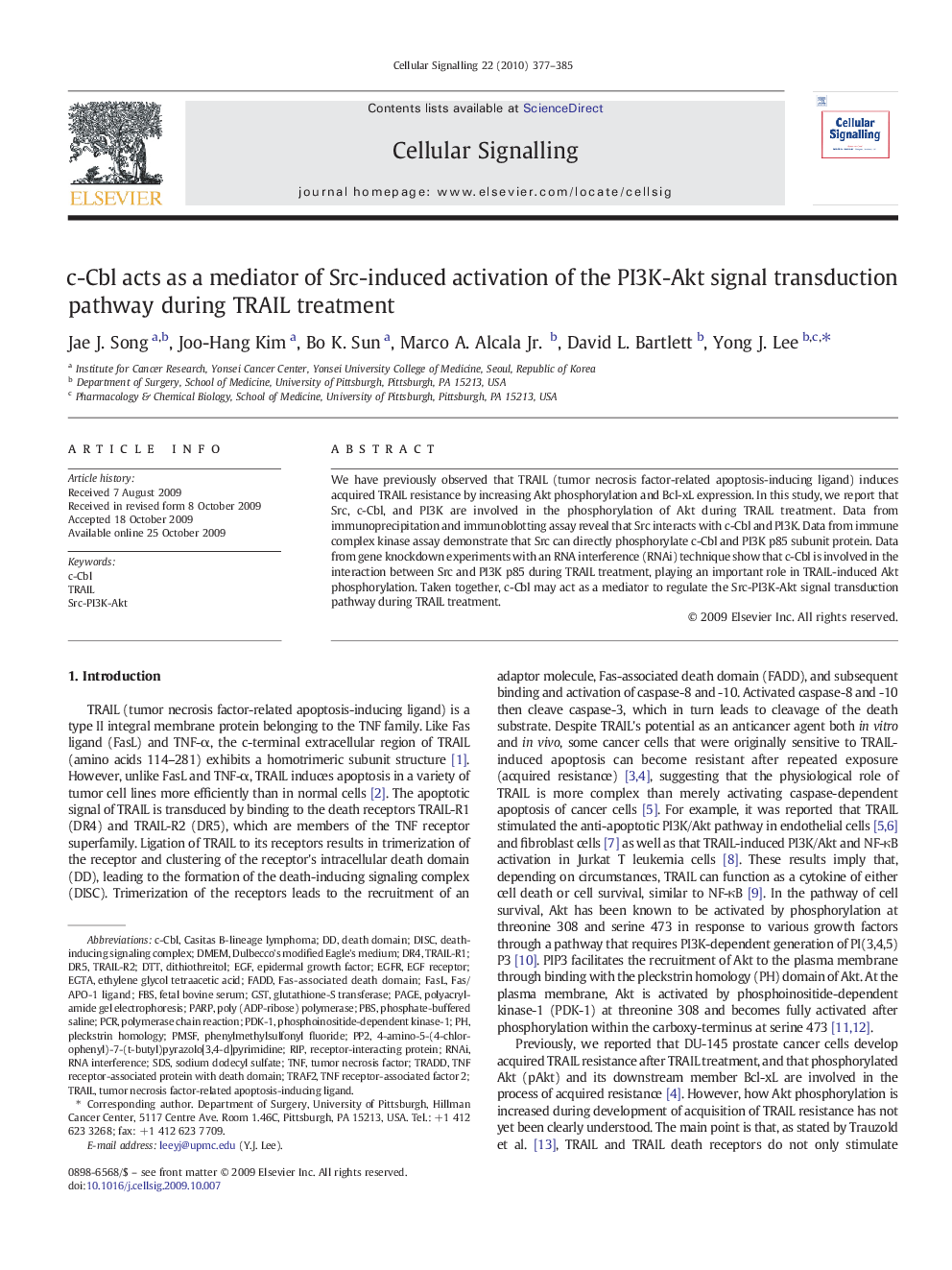| Article ID | Journal | Published Year | Pages | File Type |
|---|---|---|---|---|
| 10815722 | Cellular Signalling | 2010 | 9 Pages |
Abstract
We have previously observed that TRAIL (tumor necrosis factor-related apoptosis-inducing ligand) induces acquired TRAIL resistance by increasing Akt phosphorylation and Bcl-xL expression. In this study, we report that Src, c-Cbl, and PI3K are involved in the phosphorylation of Akt during TRAIL treatment. Data from immunoprecipitation and immunoblotting assay reveal that Src interacts with c-Cbl and PI3K. Data from immune complex kinase assay demonstrate that Src can directly phosphorylate c-Cbl and PI3K p85 subunit protein. Data from gene knockdown experiments with an RNA interference (RNAi) technique show that c-Cbl is involved in the interaction between Src and PI3K p85 during TRAIL treatment, playing an important role in TRAIL-induced Akt phosphorylation. Taken together, c-Cbl may act as a mediator to regulate the Src-PI3K-Akt signal transduction pathway during TRAIL treatment.
Keywords
EGFRPDK-1TRAIL-R2TRADDDR5DR4TRAIL-R1PP2PARPFADDTNFDISCPMSF4-amino-5-(4-chlorophenyl)-7-(t-butyl)pyrazolo[3,4-d]pyrimidinePAGEEGFSDSFBSDMEMPBSDTTEGTAGSTc-CblDulbecco's modified Eagle's mediumRNA interferenceRNAiethylene glycol tetraacetic acidpolyacrylamide gel electrophoresisdeath domainFas-associated death domaindithiothreitolsodium dodecyl sulfatefetal bovine serumepidermal growth factorFasLtumor necrosis factorphenylmethylsulfonyl fluorideCasitas B-lineage lymphomaPhosphate-buffered salinePleckstrin HomologyPhosphoinositide-dependent kinase-1polymerase chain reactionPCRRIPReceptor-interacting proteinpoly (ADP-ribose) polymerasedeath-inducing signaling complexGlutathione-S transferaseEGF receptor
Related Topics
Life Sciences
Biochemistry, Genetics and Molecular Biology
Biochemistry
Authors
Jae J. Song, Joo-Hang Kim, Bo K. Sun, Marco A. Jr., David L. Bartlett, Yong J. Lee,
